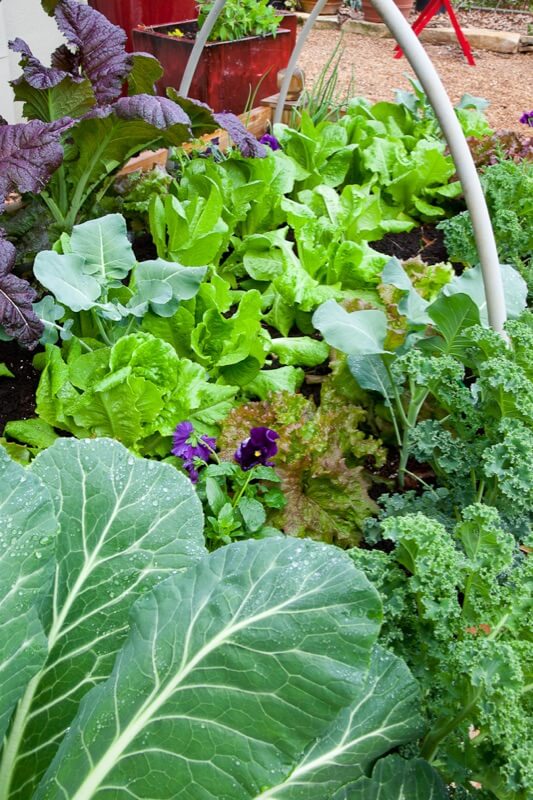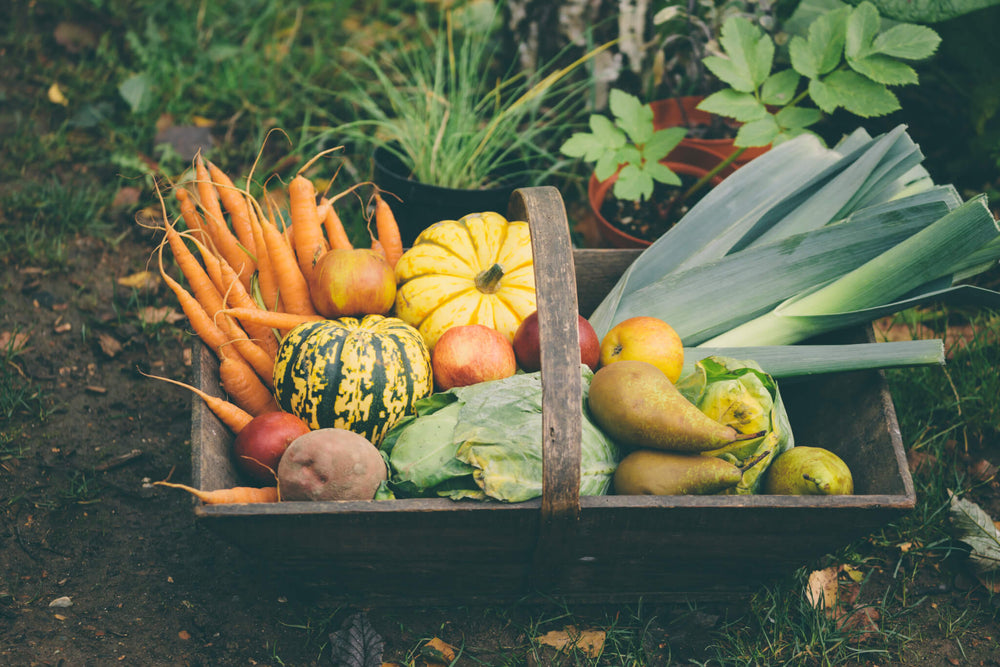Many new gardeners mourn the end of summer, thinking it also spells the end of garden-to-table meals. But homegrown goodness can stretch far beyond back-to-school time if you plant a fall garden full of vegetables.
Why Plant a Fall Garden?
Planting fall crops in your garden lets you continue growing fresh, healthy food at home—plus, there are so many interesting cool-weather choices to try, from sweet, strawberries to colorful Gourmet Salad Mix. While you might miss the sweet peppers of summer, fall veggies offer unique, healthy, flavorful ingredients for your autumn comfort-food recipes. Plus, fall gardens offer many benefits:
- Cooler temps mean you'll have to water less often—and you'll sweat less out in the garden, too!
- Many cool weather veggies and herbs, like lettuce, arugula, and parsley, tolerate—and even appreciate—some shade. (Check the plant tag—it will tell you how much light it needs.) So if you missed out on growing sun-loving tomatoes, peppers, and eggplants, you're in luck.
- Fall offers a respite from many garden pests, though you'll still want to keep an eye out for interlopers like cabbage worms, which love feasting on leafy greens like collards and (of course) cabbage. If you see one (check the undersides of the leaves), pick it off and drop it in some soapy water.
- While summer's heat makes arugula bitter and lettuce bolt, frost actually sweetens the flavor of many cool-season crops, like Brussels sprouts and kale.
What to Plant in a Fall Garden (and When to Plant It)
As with any garden, think about what you typically buy at the grocery store or farmers market, then try growing it at home. To ensure you get to harvest tender crops before a hard freeze, check your area's expected first frost date. Once you know that, you can plan when to plant based on each plant's "days to maturity," which can be found on the plant tag, or on this website (click on the "Vegetables" or "Herbs" tab at the top of the page).
That's just one of the many great reasons to grow Bonnie Plants®: You save valuable growing time by planting hearty vegetable and herb plants that are already well on their way to maturity. That way, you can quickly transition from your summer garden to fall crops without waiting for seedlings to mature.
Use this planting reference to figure out what to plant when:



10-12 weeks before first frost:BroccoliBrussels sproutsCabbageCauliflower
Carrots
CeleryFennelKohlrabiOnionParsley8-10 weeks before first frost:ArugulaChinese cabbageCollardsKaleLettuceMustard greensSpinachSwiss chardTurnip greens6-8 weeks before first frost:
Beets
Lettuce (if protected with a row cover)
Mache
Radishes
Fall is also a great time to plant perennial vegetables and fruits (the kinds that come back year after year) like asparagus and strawberries. While you won't get to harvest until spring (and not until the second spring for asparagus), the cooler fall temperatures give the plants a chance to become well established. Also, planting perennial herbs like mint, thyme, oregano, sage, chives, lemon balm, lavender, and rosemary in the cooler fall weather allows the plants to develop a good root system and avoid heat stress while becoming established. (Be sure to click on the links above to find out if these plants are perennial in your zone.)
How to Plant a Fall Garden
Just like your summer garden, fall vegetables have 4 basic needs:
-
The right amount of sunlight. While many fall vegetables will tolerate some shade, all vegetables still need at least some sun to grow and thrive. Before you plant, check your garden space to determine how many hours of sunlight it receives, and remember that the light will shift and shorten in the fall.
-
Great soil. No matter where you're planting, you want to make sure to provide plant roots with the very best environment for lots of vigorous growth, in the form of rich, well-draining soil. Here's how to get it: If you're planting a traditional in-ground garden, improve your existing soil with Miracle-Gro® Garden Soil for Vegetables & Herbs. Growing in a raised bed? Fill it with Miracle-Gro® Raised Bed Soil. For your container garden, use Miracle-Gro® Potting Mix. All three soils provide plants with a boost of nutrition to get them off to a strong start, too.
-
Consistent watering. Be sure to water plants thoroughly, both when you plant and after they're settled in the soil. A good rule of thumb is to give your green babies an inch of water per week. An inexpensive rain gauge is a great way to see how much you need to add to what Mother Nature provides.
-
Plenty of good nutrition. Think about what you feel like when you're hungry—you're just not your best self, right? It's the same thing with plants. In order to flourish and provide an impressive harvest, they need regular feeding with a top-shelf fertilizer like Miracle-Gro® Shake ‘n Feed® Tomato, Fruit & Vegetable Plant Foodbeginning about a month after planting. Chock-full of natural ingredients like earthworm castings, kelp, and bone meal, this is an exceptionally well-rounded meal for your plants. It's got calcium, too, for strong cell walls. Bonus: When you grow your Bonnie Plants® in Miracle-Gro® soil and feed them with Miracle-Gro® plant food, you'll be rewarded with up to 3 times the harvest over the growing season (vs. unfed plants)! Of course, you'll need to follow all the label directions.


One more thing: In milder climates, many vegetables planted in the fall can overwinter into spring with help from a layer of mulch or a low tunnel for protection. Check out our articles on Make a Row Cover Hoop House and How to Build a Raised Bed Cold Frame to extend your harvest.
So as the days shorten, you may need a sweater in the garden—but there's still plenty of time to savor homegrown delicacies before winter arrives. Enjoy!
Click here to check out the Bonnie Plants selections of veggies and herbs you can get shipped straight to your door this fall.




 Herbs
Herbs
 Vegetables
Vegetables
 Fruit
Fruit
 Flowers
Flowers
 Succulents
Succulents


